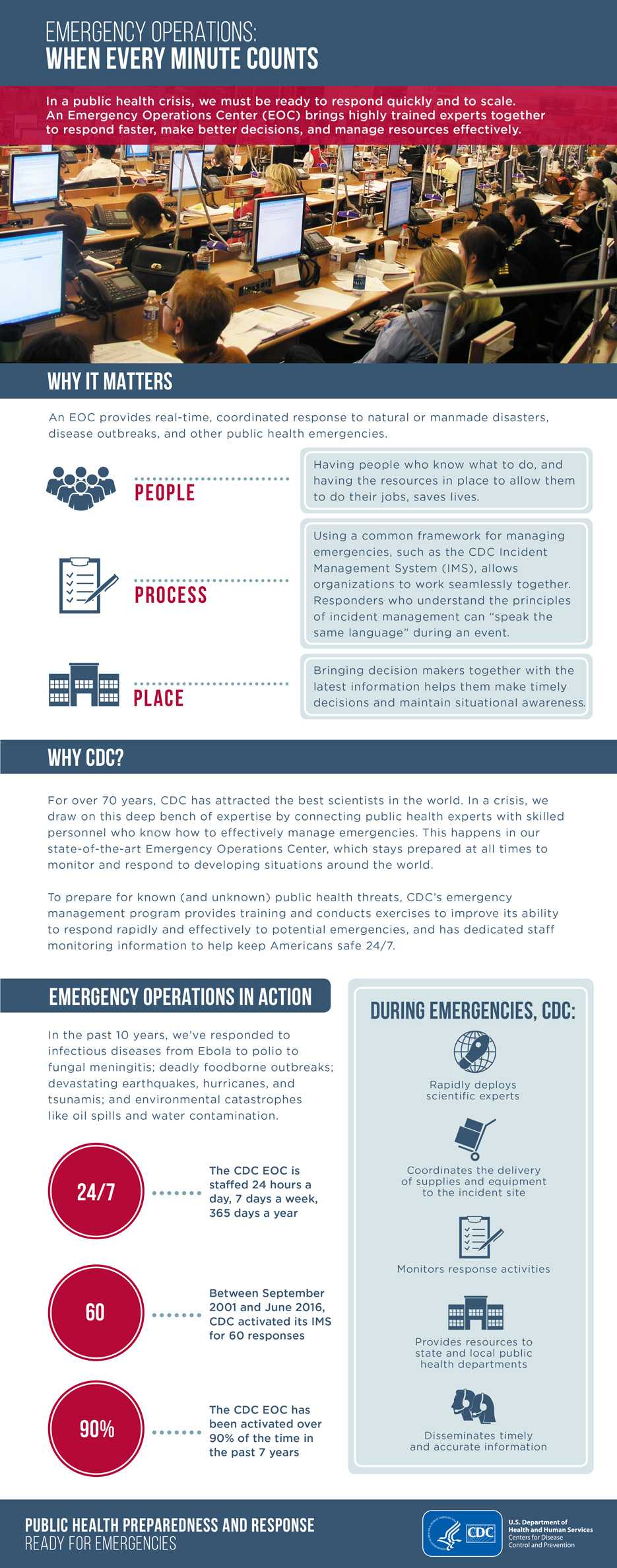Emergency Operations: When Every Minute Counts
Text Equivalent
Emergency Operations: When Every Minute Counts
In a public health crisis, we must be ready to respond quickly and to scale. An Emergency Operations Center (EOC) brings highly trained experts together to respond faster, make better decisions, and manage resources effectively.
Why It Matters
An EOC provides real-time, coordinated response to natural or manmade disasters, disease outbreaks, and other public health emergencies.
- People: Having the resources in place to allow them to do their jobs, saves lives.
- Process: Using a common framework for managing emergencies, such as the CDC Incident Management System (IMS), allows organizations to work seamlessly together. Responders who understand the principles of incident management can “speak the same language” during an event.
- Place: Bringing decision makers together with the latest information helps them make timely decisions and maintain situational awareness.
Why CDC?
For over 70 years, CDC has attracted the best scientists in the world. In a crisis, we draw on this deep bench of expertise by connecting public health experts with skilled personnel who know how to effectively manage emergencies. This happens in our state-of-the-art Emergency Operations Center, which stays prepared at all times to monitor and respond to developing situations around the world.
To prepare for known (and unknown) public health threats, CDC’s emergency management program provides training and conducts exercises to improve its ability to respond rapidly and effectively to potential emergencies, and has dedicated staff monitoring information to help keep Americans safe 24/7.
Emergency Operations in Action
In the past 10 years, we’ve responded to infectious diseases from Ebola to polio to fungal meningitis; deadly foodborne outbreaks; devastating earthquakes, hurricanes, and tsunamis; and environmental catastrophes like oil spills and water contamination.
- 24/7: The CDC EOC is staffed 24 hours a day, 7 days a week, 365 days a year
- 60: Between September 2001 and June 2016, CDC activated its IMS for 60 responses
- 90%: The CDC EOC has been activated over 90% of the time in the past 7 years
During Emergencies, CDC:
- Rapidly deploys scientific experts
- Coordinates the delivery of supplies and equipment to the incident site
- Monitors response activities
- Provides resources to state and local public health departments
- Disseminates timely and accurate information
- Page last reviewed: February 6, 2017
- Page last updated: February 6, 2017
- Content source:


 ShareCompartir
ShareCompartir
